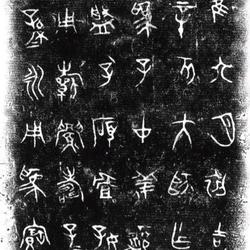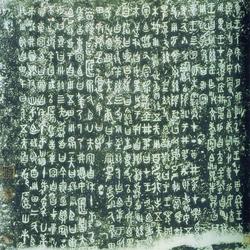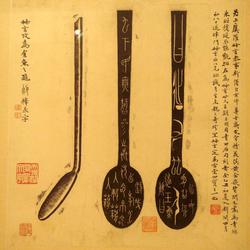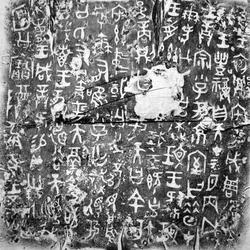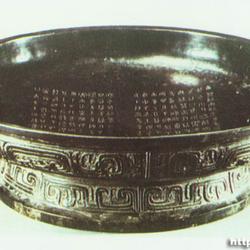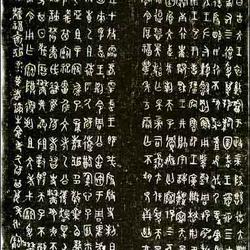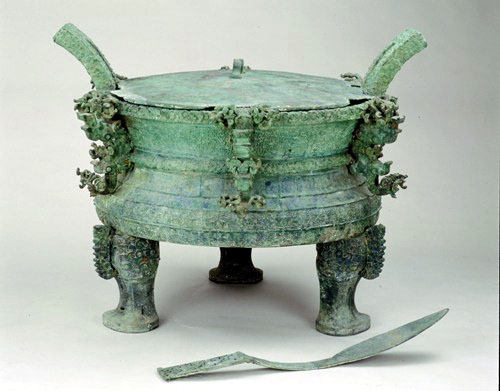
"Prince Wu Ding" Spring and Autumn Period, Chu (770--476 BC), 67 cm in height, 66 cm in diameter, and 68 cm in abdominal diameter
Excavated from Xiasi Temple in Zhechuan, Henan in 1979, collected by Henan Provincial Museum
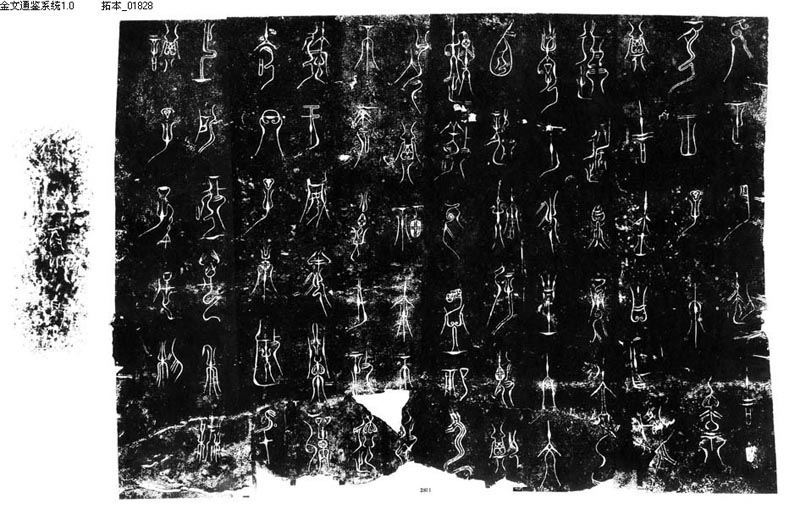
The inscription of "Prince Wuding"
"Prince Wu Ding" is a bronze vessel from the Chu State during the Spring and Autumn Period. A set of seven bronze tripods was unearthed from the tomb. The words "Prince Wu" are inscribed on the tripods. The seven tripods are arranged from large to small, called Li Ding. This vessel It's the largest of them all. The overall height is 62 cm and the length of the dagger is 63 cm. It was unearthed from the Chu tomb in Xiasi, Xichuan County, Henan Province in 1978 and is now in the Henan Provincial Museum. This tripod has a flat bottom and is tied around the waist. Its ears are turned outwards and its three legs are strong and stable. A flat lid is placed on the mouth of the tripod, and there is a bridge-shaped handle on the top of the lid. The lid of the tripod is flat and slightly curved, with round buttons. The lid, neck, and inner wall of the abdomen are all cast with inscriptions. The inscription on the abdomen has 84 characters, describing the purpose of the vessel Wang Ziwu made and praising his merits.
What is very different from the simple and honest shape is that the external decoration of the tripod is intricate, delicate and strange. Therefore, this important artifact, which was once a heirloom of the nobles of the Chu state, is actually a perfect combination of the bronze culture of the Central Plains since the Shang and Zhou dynasties and the ingenuity and ingenuity of the Chu people. The same Taotie pattern, Kuilong pattern, Panchi pattern and Taoqu pattern that decorates bronzes. This tripod has both the Fan Zhuyang lines common in the Central Plains area, Jingchu's unique reliefs and round carvings, and uses unprecedented advanced technology. technology. The six three-dimensional monsters surrounding the belly of the tripod are each made of two curled Kui dragons. They were cast separately using the lost wax method and then welded to the tripod body. Six animal heads protrude from the mouth of the tripod, which coincide with the six bayonet holes on the edge of the tripod lid. New ideas such as mortise and tenon joints and intermediaries are used. The craftsmanship is superb and is the first-class level in the world at that time. The decoration and practicality of the entire tripod are organically unified and perfectly combined.
The ancestors of the Chu region in the southern country were the pioneers of Chinese romanticism. Their thoughts of wandering in the heavens and dancing with the gods created great poets like Qu Yuan and left us with immortal chapters such as "Li Sao". The ingenious mythical beasts and birds cast on bronze vessels are undoubtedly the annotations of these magnificent chapters. From the Chu bronzes in the Spring and Autumn Period to the silk paintings and lacquerware from Mawangdui Han Tombs in the Han Dynasty, we can feel the vast, wild and restless heart of Doctor Qu at all times.
This Prince Wu Ding belongs to Zigeng, the son of King Zhuang of Chu and a minister of King Kang of Chu. His official position was Ling Yin, which was equivalent to the later prime minister, so the tripod was also called Ling Yin Zigeng Ding. A total of seven tripods of the same shape and different sizes were unearthed from Wang Ziwu's tomb, and each tripod contained cow limb bones. The cow bones contained in the seven tripods may belong to the same cow. There is also a copper dagger for fishing beef and cow bones inside the tripod. What is even more rare is that the tripods are all engraved with bird seal script inscriptions. These precious calligraphy arts are also very important historical materials. The article records the merits of Wang Ziwu's life, and explains that the tripod in this shape is a Sheng tripod, that is, the cooked meat is taken out of the wok tripod and put into the tripod to mix and keep it warm. Wang Ziwu was buried with seven tripods, which showed his high status in Chu State. A total of 6,098 cultural relics of various types were unearthed from his tomb, as well as 19 horses and seven chariots. Today, more than two thousand years later, the majesty of the past has gone with the wind, but these beautiful tableware on display in front of us still show the glory of an era.
The inscription of "Prince Wu Ding" expresses the memory of the ancestors, narrates Wang Ziwu's own achievements in benevolent administration to the people, and educates his descendants to use this as a criterion. The words in the whole text rhyme smoothly. It is a long and beautiful text rarely seen on Chu bronzes and has important historical value. In addition, the inscription is written in bird seal script, which is known as the earliest "artistic calligraphy" in China.
[Inscription] Cover inscription: Yi Zhi (鍍), vessel inscription: Wei (Wei) in the first month of the first month of Ji Ding Hai, Prince Wu (selected) its auspicious gold, since Zha (made) Yi Wei) tripod, used (enjoyed) filial piety (For) my emperor and (ancestor) Wen Kao, use (praying for eyebrows and longevity) (honggongshuchi), (fear and jealousy) to worship, worship (jue) alliance and worship, and receive his blessings forever. I am not afraid of bad things, benefiting from political virtues, worrying about majesty, justice, and beasts. The order (order) Yin Zigeng is to destroy the urgent needs of the people. There will be no death (period) for ten thousand years, and the descendants will be the system.

